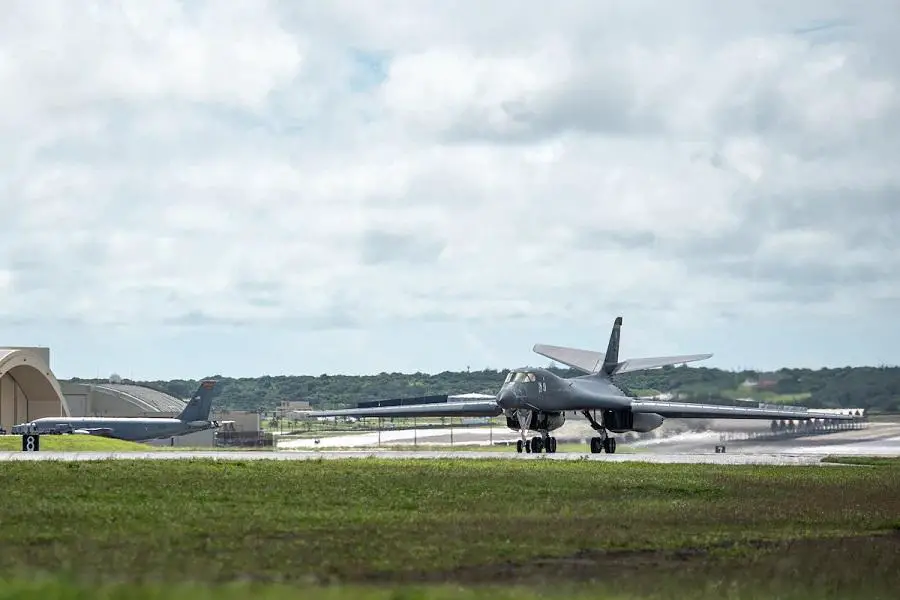U.S. Air Force B-1B Lancers landed at Andersen Air Force Base, Guam, October 18. This is the second time Andersen welcomed the Lancers for a Bomber Task Force mission this year, demonstrating the bomber’s ability to rapidly deploy anywhere, anytime, and provide lethal precision global strike options for combatant commanders. Earlier this year, four B-1s returned from Andersen where they conducted a multitude of missions. These missions included aerial integration with the Japan Air Self-Defense Force and a hot pit refueling operation with the Royal Australian Air Force (RAAF) at RAAF Base Darwin; a B-1B Lancer first. This time, the Lancers will partner with more Allies for several training missions in the Indo-Pacific.

“This Bomber Task Force demonstrates continued U.S. commitment to the Pacific. Not only does it provide our B-1 aircrew invaluable training opportunities with important Allies and partners, but it also signals our nation’s unwavering support to them,” said Col. Joseph Sheffield, 28th Bomb Wing commander.
“Bomber Task Force deployments and missions provide key assurances and cooperation with joint and partner Allies in the region. The B-1 is an especially capable platform in this region, being able to travel large distances and bear significant firepower with precision and standoff munitions,” said Lt. Col. Daniel Mount, 37th Bomb Squadron director of operations.

This time, the Rockwell B-1 Lancer supersonic variable-sweep wing, heavy bombers will partner with more Allies for several training missions in the Indo-Pacific. These missions support the 2018 National Defense Strategy objectives of strategic predictability and operational unpredictability, enabling strategic bombers to operate forward from a broad array of overseas and continental U.S. locations with greater operational resilience. Bomber Task Force missions enhance readiness for a variety of Air Force career-fields, training Airmen to respond to any potential crisis or challenge in the Indo-Pacific. These career-fields work simultaneously, often across disciplines, to complete the mission.

The Rockwell B-1 Lancer is a supersonic variable-sweep wing, heavy bomber used by the United States Air Force. It is commonly called the “Bone” (from “B-One”). After a long series of studies, Rockwell International (now part of Boeing) won the design contest for what emerged as the B-1A. This version had a top speed of Mach 2.2 at high altitude and the capability of flying for long distances at Mach 0.85 at very low altitudes. The combination of the high cost of the aircraft, the introduction of the AGM-86 cruise missile that flew the same basic speed and distance, and early work on the stealth bomber all significantly reduced the need for the B-1. It is one of three strategic bombers serving in the U.S. Air Force fleet along with the B-2 Spirit and the B-52 Stratofortress as of 2022.












